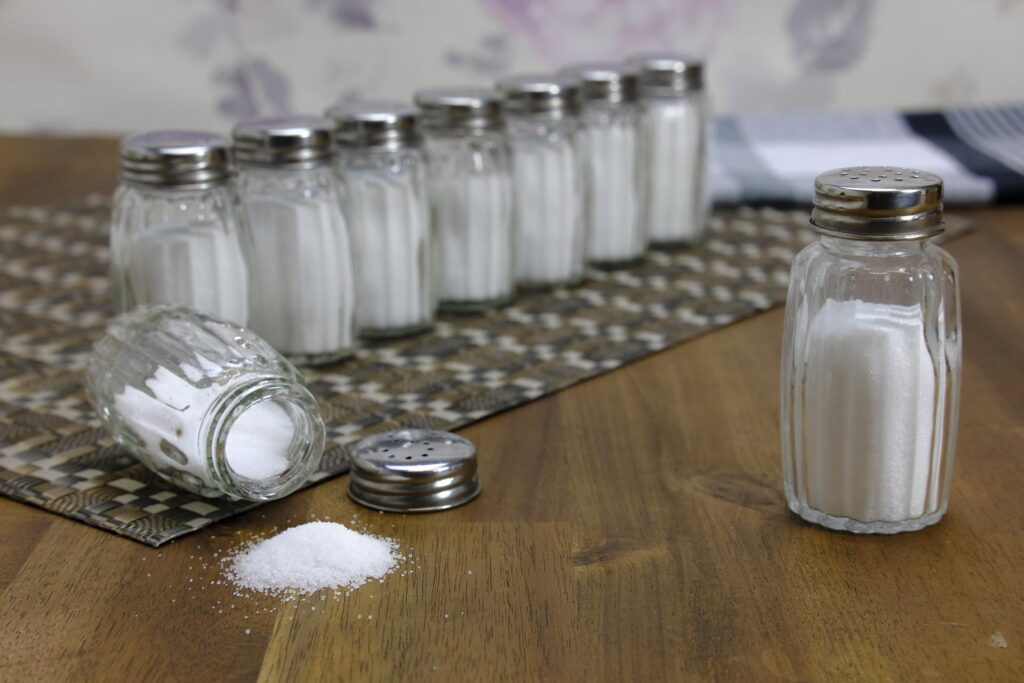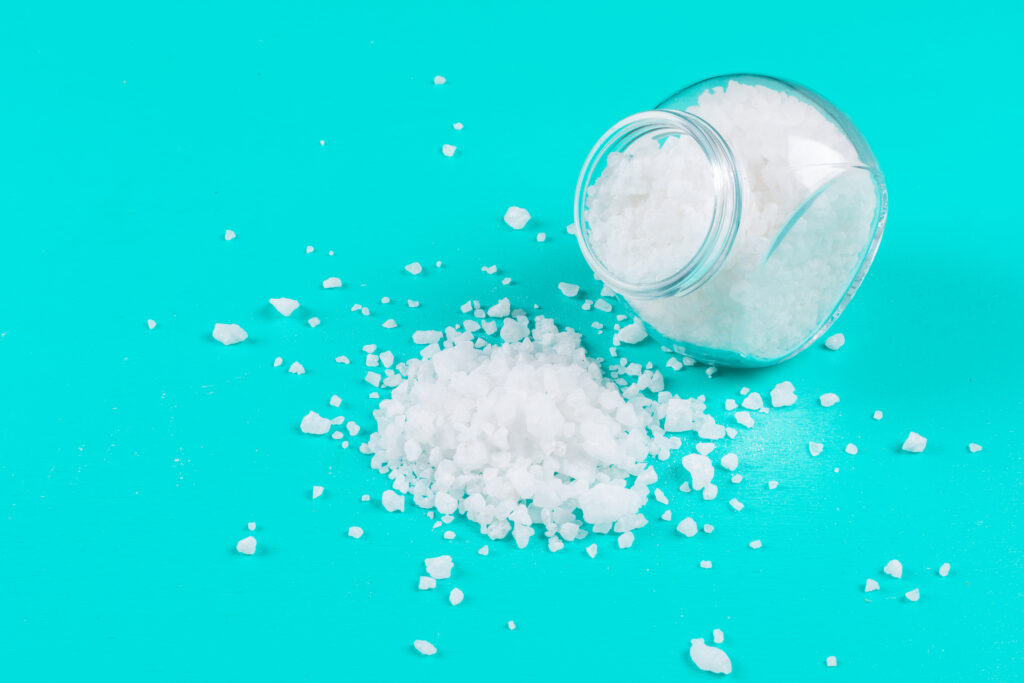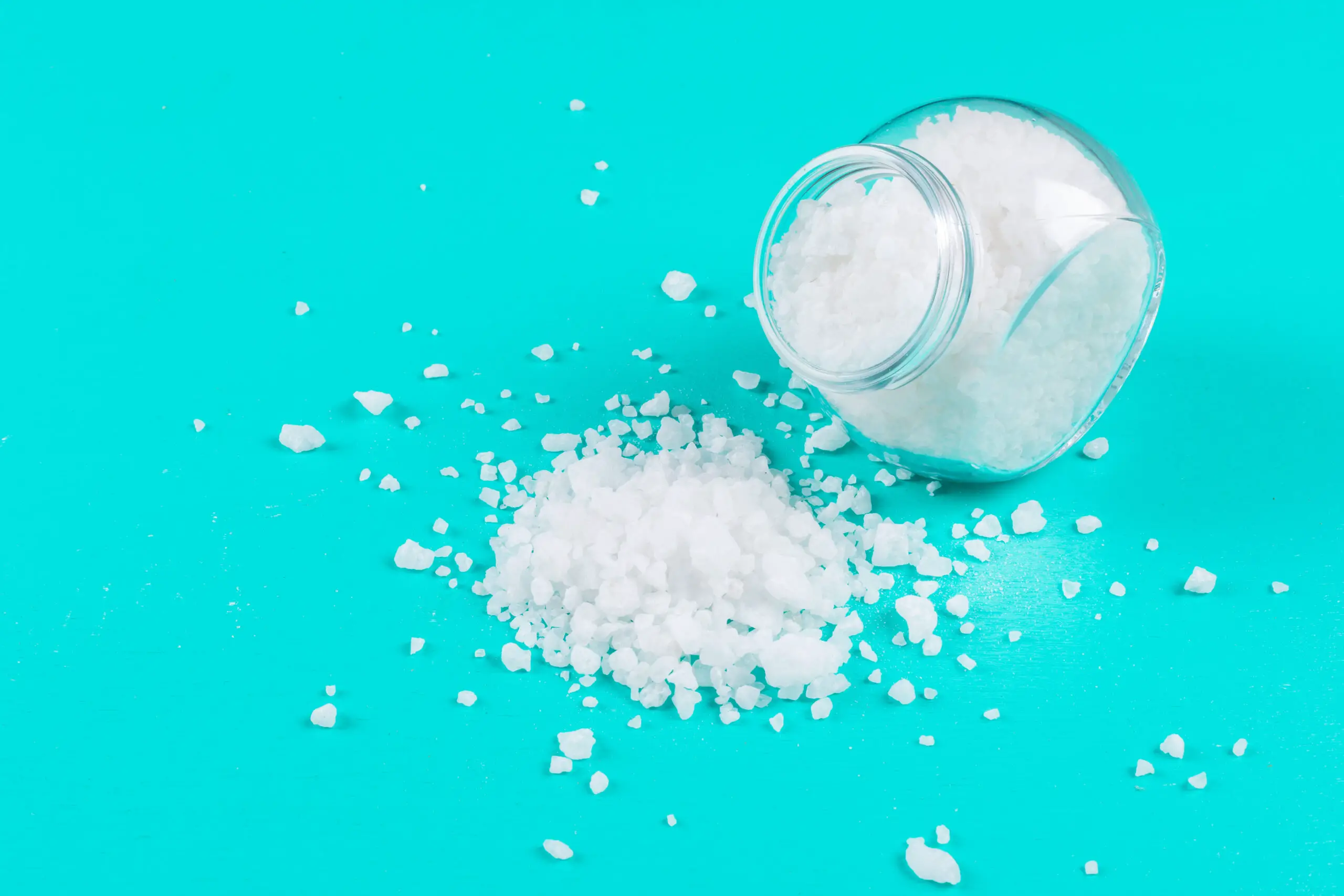Some of the links on this page are affiliate links, which means that Buzzy Kitchen earns commission from purchases made – at absolutely no extra cost to you. Thank you so much for supporting Buzzy Kitchen!
Have you come across a recipe that calls for sea salt but only have table salt in your kitchen cupboard? Fear not, people. Help is at hand. You can use other types of salt as a substitution for sea salt, and in some cases, you can just as easily use table salt. Here, you’re going to find a handy sea salt to table salt measurement conversion guide.
But, there are a few things you’ll need to know first.
When you’re only adding a pinch of salt here and there, you can pretty much use the exact same amount of table salt as you would sea salt – and vice versa.
It is actually when you start getting into the larger quantities, such as half a cup, that you will need to make changes to how much of which salt you use in a recipe when you are substituting one for the other.
Sea Salt and Table Salt: What’s the Difference?
Size of the individual salt grains or flakes is what you need to know about, when switching out sea salt for table salt, or the other way around. There are other differences, of course, and you can read about them here: What’s the Difference Between Sea Salt and Table Salt?
Table salt is very fine and granulated, similar in texture and consistency as granulated sugar.
(The type of sugar that you would probably put in your cup of tea.)

Image by Bruno /Germany from Pixabay
Sea salt, on the other hand, is usually coarser and larger in grain size.
You can get fine sea salt, which has been refined and ground a little more than traditional sea salt; but, for the most part, sea salt ‘bits’ are larger in size.
Because of the difference in size, you may need to tweak how much table salt you use in your recipe, if you are switching sea salt out and replacing it with table salt.
One teaspoon of table salt is going to have a lot more of the individual grains than one teaspoon of coarse sea salt. The latter has larger crystals, so fewer salt bits will take up the space.
Table salt, on the other, is much smaller, so there will be many more individual bits of salt on the spoon. In turn, the teaspoon of table salt is likely to be a little saltier than the teaspoon of sea salt – but there won’t be a lot in it.
What’s the Best Salt to Use if I Don’t Have Sea Salt?
The best sea salt substitute is another coarse rock-style salt, such as kosher salt.

⇢ Kosher Certified
⇢ Non-Iodised
⇢ Large rock salt
You could also use Himalayan pink salt, but you will want to make sure the size of the grains are roughly the same.
You will also want to make sure that you buy Himalayan pink salt, also known as Himalayan pink rock salt and just Himalayan rock salt, that is suitable for human consumption. Some types of rock salt are not safe for human consumption. Always check the label before using rock salt in a recipe.
Can I Use Table Salt Instead of Sea Salt?
You can use table salt in place of sea salt, but you can’t always switch them out in a straight 1:1 ratio.
If you perform a straight 1:1 swap, your dish will be saltier than usual. This is because there are more grains of table salt (smaller ‘bits’) on one teaspoon than there are grains or ‘bits’ of coarse sea salt or rock salt.
Table Salt to Sea Salt Measurement Conversion
When you start talking about larger amounts of salt, such as half a cup, you will likely need to tweak the recipe. Generally, you will need to use a little less table salt than you would sea salt, but this only applies if your table salt is fine and your sea salt need is coarse.
(Again: you will fit more grains of fine-grain table salt on a spoon than you would coarse-grain sea salt.)
Some people suggest weighing salt rather than measuring by volume to give a more precise substitution amount, but not all salts weigh the same, in the same way that not all salts are the same size of grain.

Rock salt photo created by 8photo – www.freepik.com
One tablespoon of table salt weighs somewhere between 15 and 19 grams, depending on how heaped you make it, and the coarseness of the table salt itself. (You can get larger-grained table salt these days.)
Compare that to another type of salt, however, and you’ll notice that things are different. The same tablespoon, but this time of large-grained/coarse-grained sea salt, will weigh approximately 10 to 13 grams.
The amount of salt you add to a recipe will also depend on your own personal taste, so it is worth taking a slightly holistic approach to salt substitutions. Start by adding a little bit, then tasting it, then adding a little bit more if necessary. Repeat until it tastes how you think it’s supposed to.
You can always add more salt.
Unfortunately, you can’t take salt away once you’ve already added it to a dish.
| Coarse Sea Salt Amount: | Table Salt Substitution: |
|---|---|
| A pinch | A pinch |
| 1/4 teaspoon | 1/4 teaspoon |
| 1/2 teaspoon | 1/2 teaspoon (minus a pinch) |
| 1 teaspoon | 1/2 to 3/4 teaspoon |
| 1 tablespoon | 1/2 to 3/4 tablespoon |
| 1 cup | 1/2 to 3/4 cup |
As you can see, when you start getting into the larger amounts of salt, you should use roughly half the amount of table salt that the recipe calls for in coarse-grained sea salt. That should be your starting point, anyway.
As I’ve said before: you can always add more if you need to, but you cannot take away ingredients once you have added them in.
So, if you add too much salt, that’s it. You’ve added too much salt. There’s no way for you to take it back out again.
